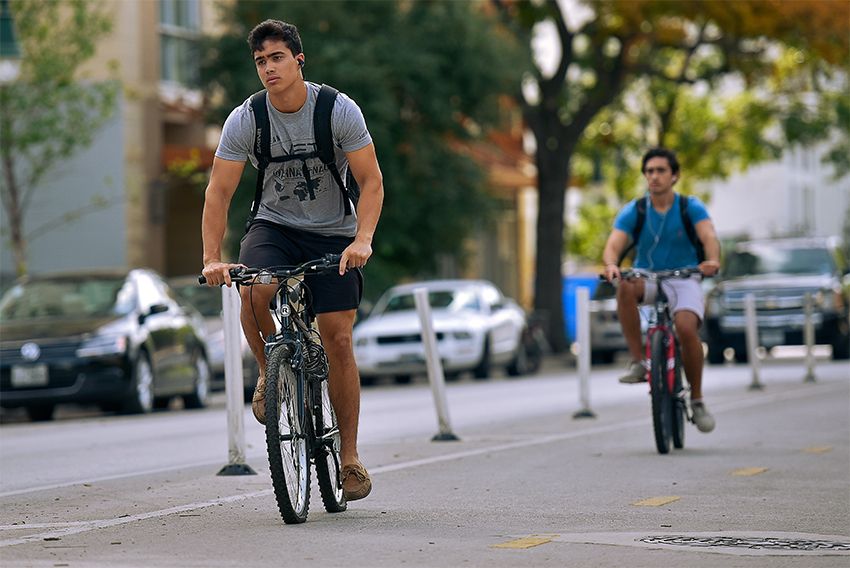As I returned to my West Campus apartment at the end of spring break, I noticed something different about Rio Grande Street. The cones that divided the bicycles lanes from the traffic lane had been replaced by concrete islands.
As a regular bicycle commuter, I believe bicycling infrastructure should be safe both for cyclists and for cars. That isn’t the case for the bicycle lanes on Rio Grande — they’re defective by design. These dangerous lanes will only cause needless accidents and injuries to cyclists. And by replacing the cheap and flexible cones with expensive and permanent concrete, the city of Austin just made these lanes nearly impossible to fix.
The Rio Grande bicycle lanes are of a design known as the two-way cycle track. There’s two bicycle lanes, one in each direction, on one side of the street. A buffer separates them from the single lane for other vehicles.
Cycle tracks offer “(improved) perceived comfort and safety” and are “more attractive to a wide range of bicyclists at all levels and ages,” according to the National Association of City Transportation Officials.
Intuitively, cycle tracks seem safer. Bicycles and motor vehicles are separated, so shouldn’t there be less opportunities for crashes?
In reality, safety issues arise at intersections. A large-scale study of bicycle lanes in Denmark found that “the number of injury accidents with vulnerable road users in intersections had increased by 34 percent … while the effect on (straight) sections was small and uncertain.”
Sustainability writer Zachary Shahan suggests a possible cause: Drivers are “in the habit of looking for oncoming traffic on their left when they are turning left, but two-way bike lanes result in bicyclists coming up from the far left on the back side.”
Who can blame them? No driving instructor teaches you to expect oncoming traffic from the wrong direction.
The Rio Grande cycle track is located in the worst possible environment for a cycle track. On Rio Grande, there is an abundance of cross streets, driveways, intersections and stop signs, all of which increase the chances of a traffic collision involving a cyclist.
It may be a deathtrap, but at least it’s attracting new riders. After the construction of the cycle track, the number of bicyclists on Rio Grande more than doubled, according to a study by Portland State University and the National Institute for Transportation and Communities.
There’s a perverse irony to the bicycle lanes on Rio Grande Street — they entice people to bicycling, but they also put them in danger. It’s unethical to build bicycle infrastructure to attract new riders if that infrastructure is poorly designed.
As a West Campus resident and bicycle commuter, I value safety, freedom and independence. Clearly, the Rio Grande cycle track is unsafe. Worst of all, it sends the wrong message to everyone: Bicyclists are second-class users of the road that need special treatment and expensive dedicated lanes. I want the liberty to ride everywhere, not just on roads with fancy green bicycle lanes that are designed to hurt me anyway.
But by replacing cones with concrete, the city of Austin has cut off that debate. Reconfiguring Rio Grande now would require expensive demolitions of the new dividers, and concerned citizens would — not without reason — decry the construction of any bicycle infrastructure as incompetent and wasteful.
We had alternatives. We could have turned Rio Grande into a two-way street, improving mobility for everyone, and used other designs like bike boulevards and shared-lane markings that integrate bicyclists and motorists instead of segregating them.
I suppose we’ll never get the chance now.
Young is a computer science junior from Bakersfield, California. He is a columnist.





















